LEGO is more than just a toy – in kindergarten, it becomes a learning tool. How does it help children develop logic, motor skills, and teamwork? Anna Göndörová, a teacher at a private kindergarten in Trnava, explains how LEGO fosters creativity and essential skills. You'll learn how lessons are structured, which activities are most effective, and how this learning method influences play even at home. Discover why both children and parents have embraced this concept.
Q: LEGO is a part of many of our childhoods and home play. What led to it becoming an educational tool in preschools?
LEGO naturally fits into children’s world—it's attractive, engaging, and sparks creativity. This made its integration into kindergartens a logical step. Educators use children’s existing motivation to turn LEGO into a tool for well-rounded personal development.
Q: How does a typical LEGO class go?
A typical LEGO lesson starts with routine activities to create a sense of security, followed by problem-solving tasks where children work on specific challenges. Afterward, they present their solutions, enhancing communication and confidence. The session concludes with free play, allowing children to create their own projects. LEGO is used as a tool for achieving educational goals like memory, spatial awareness, and teamwork.
LEGO is a tool used to achieve educational goals. For example, to develop short-term memory, children are given tasks where they must remember the order of construction and build it without a model. For spatial orientation, children work with a grid to transfer images onto paper. Tasks are also designed to encourage communication and teamwork, where children must collaborate in groups to solve challenges. Almost any educational objective can be achieved with LEGO, depending on creativity and the weekly plan.
Q: How do parents react to this way of learning?
At first, they perceive it as a pleasant addition to the preschool program. However, they gradually notice that their children begin to play with LEGO differently – more thoughtfully and creatively.
Every year, we participate in the First LEGO League competition, where children work on various topics, discover, and explore. They bring the play from the classroom home, where parents see that LEGO is much more than just a toy.
At the end of the project, we organize a presentation where the children showcase their work to their parents. It often happens that after such a presentation, other parents want to enroll their children in our preschool.
Q: Where did you draw inspiration from? Does the LEGO-based teaching concept come from abroad?
Yes, the LEGO Education concept comes from abroad, and many activities have already been created. Finding them on the internet is not a problem, but what’s more important is adapting them to the specific needs of the children. Is the school enrollment approaching?
Then, we focus on recognizing the first sounds in words using LEGO. As a preschool teacher, my goal is not just to teach with LEGO, but to develop the children holistically according to the national education curriculum.
Q: What skills do children develop when working with LEGO?
Almost all skills! Children practice logical thinking, fine motor skills, spatial orientation, communication, teamwork, and creativity, just by engaging their imagination in activities.
Q: How do you encourage teamwork in LEGO activities?
LEGO naturally attracts children, which is a huge advantage. To promote teamwork, I give them tasks they can't solve alone, like working with a limited number of bricks. They must team up and collaborate.
A great example of LEGO’s educational use is the "6 Bricks" system, where each child receives six bricks to build small objects individually. However, when they collaborate, something much bigger can be created, highlighting the magic of teamwork.
The 6 Bricks concept uses six different colored LEGO Duplo bricks to develop key skills such as sensory perception, spatial orientation, fine motor skills, literacy and math, communication, and socio-emotional abilities. This approach is used in schools worldwide.
Q: What are your favorite LEGO projects?
I love challenges! If I enjoy it as a teacher, the children enjoy it too. I really enjoy participating in the First LEGO League, where each year we focus on a different topic. This year, we explored oceans, marine animals, and their protection. The children were fascinated by discovering the underwater world, and the results of their work were amazing.
Q: How do you assess the progress of the children throughout the school year?
The progress is enormous! When I look back at the videos of the children's presentations, I see an incredible difference. At the beginning of the school year, they often build individually or in small groups, but by the end, they are able to collaborate, share tasks, and present their work with confidence. That’s the biggest reward for me.
Q: How do you adapt activities to the different ability levels of the children?
I have been working on creating graded tasks for a long time, meaning activities that can be adjusted according to the child's level. If a child quickly completes a task, I can make it more complex or focus on other competencies, such as communication skills. Similarly, I can simplify the task for children who need more time.
Q: What are the most common reactions of the children when they manage to complete a LEGO project?
Smiles and joy! We often organize "conferences" where they present their creations to each other. The children really enjoy this and always look forward to it.







